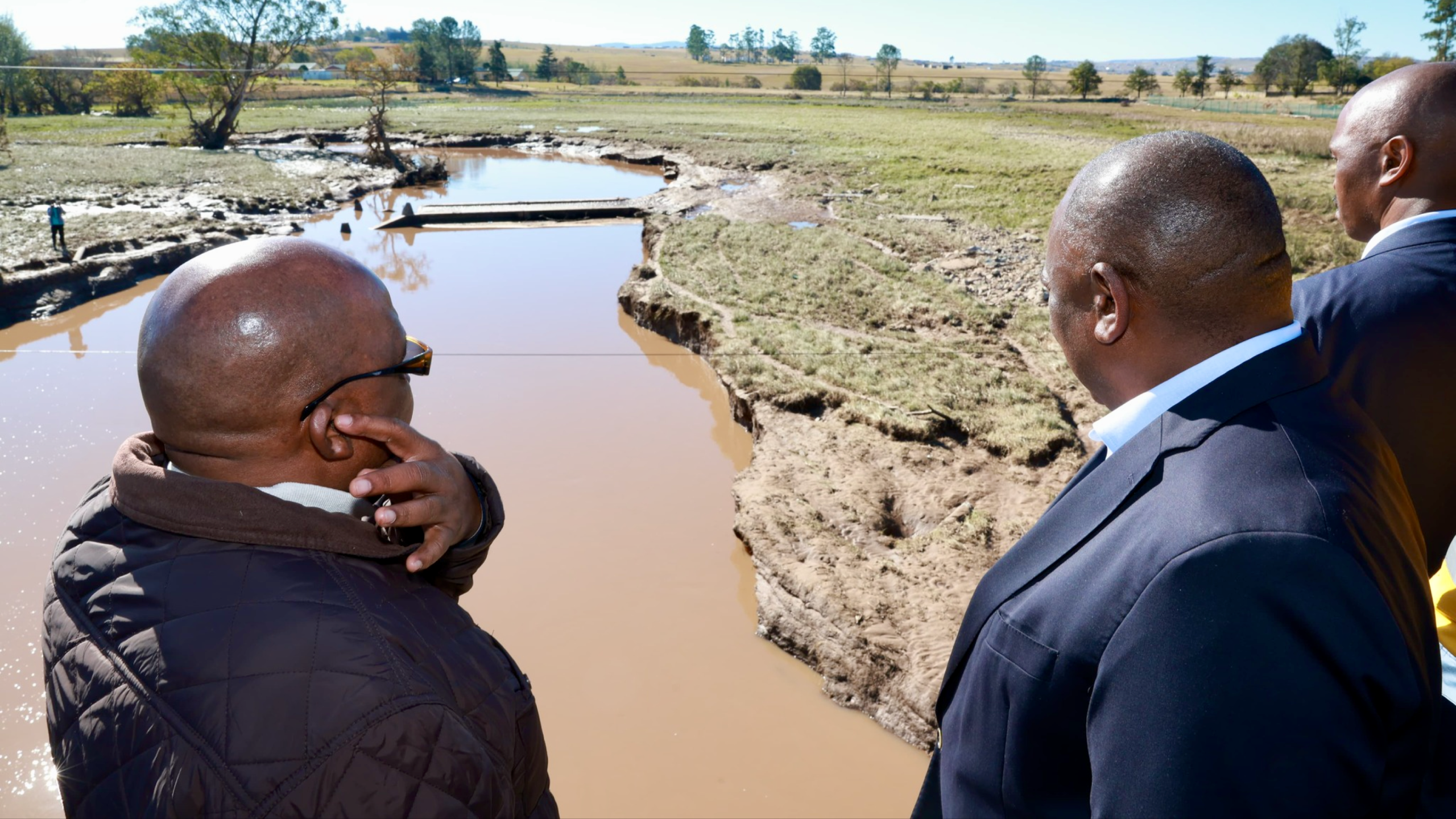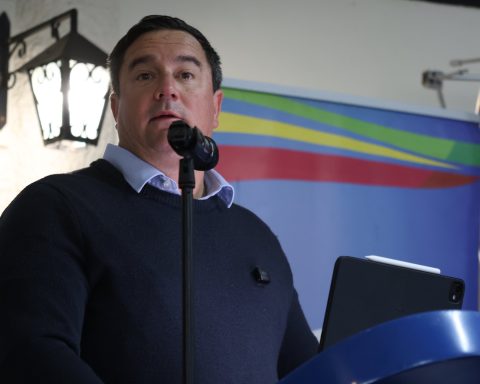Catastrophic floods have devastated South Africa’s Eastern Cape province. At least 88 people have died, hundreds have been displaced, and entire communities are mourning. The disaster, caused by a severe cold front and days of heavy rain, has led to widespread destruction in rural towns. Mthatha, Butterworth, and Qumbu are among the hardest hit.
The tragedy became clear when a school bus carrying 13 people, including 11 children, was swept away by floodwaters near Mthatha. Six children and two adults were confirmed dead. Three students were rescued after holding onto trees for hours, while four others are still missing. “We found the children’s backpacks downstream. It was heartbreaking. These were our children. The river just swallowed them.” said Nomvula Fikeni, a local resident who joined the community-led search.
Floodwaters across the province damaged more than 127 schools and 20 healthcare facilities. Roads and bridges were washed away, which cut off villages and delayed rescue efforts. An estimated 1,000 residents have been displaced. Many are taking refuge in churches and community centers.
Emergency workers continue to search for survivors, often with limited resources. For days, only one rescue helicopter was available to cover vast rural areas. “We were asleep when the water started rising,” said Bongani Jacobs, a father of three in Butterworth. “By the time we woke up, the whole house was underwater. I had to carry my children out through a window.”
President Cyril Ramaphosa visited the region on June 13 and promised quick government support. “Temporary housing will be provided within 30 days,” he said. “We cannot bring back the lives lost, but we can rebuild.” While his visit provided some comfort, critics say that years of underinvestment in rural infrastructure worsened the crisis. “This tragedy was not just about rain,” said Dr. Lindiwe Nkosi, a climate and public policy expert. “It’s about ongoing neglect. Communities here have been vulnerable for a long time.”
Experts view climate change as an important factor in the growing intensity and frequency of these disasters. The situation in the Eastern Cape highlights a wider national and global issue: balancing disaster response with long-term efforts for climate adaptation and resilience. “These floods are part of a troubling global pattern,” said Prof. Thando Mbele of the South African Weather Service.
Humanitarian groups, such as Gift of the Givers, have mobilized throughout the province. They are delivering food, clean water, and blankets. Local communities have also acted.
“We’ve lost everything, but at least we’re alive,” said Nokuthula Majozi, who is now staying in a church that has been turned into a shelter in Qumbu. “I just want my children to be safe.” Churches, schools, and NGOs keep providing important support as the government works to restore power and clean water in the affected areas.






